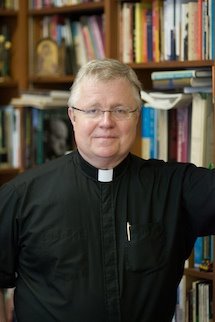
One of the striking aspects of the power of the Judeo-Christian tradition is the art it has spawned through the centuries. I recall being at Chartres Cathedral and being mesmerized by the stained glass and the many subtle and not-so-subtle statuary and architectural design that went into that magnificent place. The same experience can come from hundreds of other cathedrals across the world, one in particular comes to mind which is the Sagrada Familia in Barcelona. It doesn’t take much to see that faith has inspired artists like Chagall, Rembrandt, Matisse, Miró, Dalí, Goya, and countless others. From music to architecture, faith has inspired enormous creativity that moves the human spirit to ever-greater awareness of the beauty and wonder of the Divine in human life.

Today, spirituality and faith do not always seem to be the inspiring engine behind artistic creativity. Art has moved down a secular path. So, when I saw an article recently in the New York Times about an exhibition entitled “NeoHooDoo” at P.S.1 Contemporary Art Center, I was surprised to read that faith once again pops up artistically in unexpected places. In our world today religious art is relegated to museums and, often, religious faith is relegated to a bygone era. I find it refreshing that faith may surface in the art and imagination of young artists who seem to find a spiritual touchstone in aspects of the religious experience. I find this more refreshing than some of the so-called Christian art produced by a wooden imagination locked in the past. As the article said, faith may be not so forgotten after all. There is little question that contemporary art is changing yet again, and in ways that are subtle, yet profound. Put differently, this art moves in a religious way because it asks, “old questions about unanswerables - who are we, who were we, where are we going, what can we be - in slightly new ways, and that’s a start.”

Perhaps our own artistic imagination could use a jump-start, too?




.jpg)